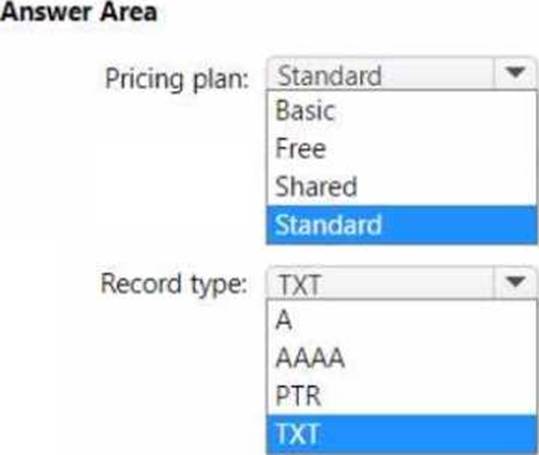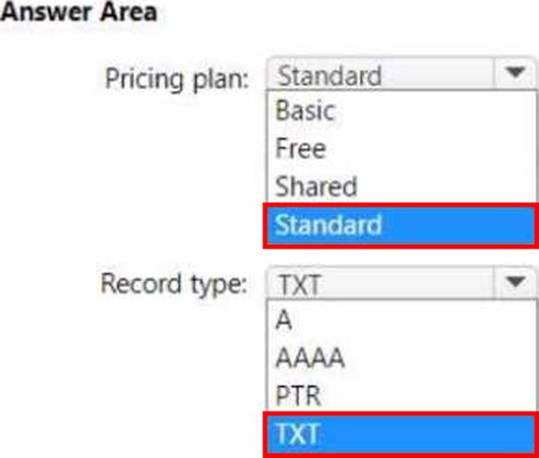Practice Free AZ-104 Exam Online Questions
Note: This question is part of a series of questions that present the same scenario. Each question in the series contains a unique solution that might meet the stated goals. Some question sets might have more than one correct solution, while others might not have a correct solution.
After you answer a question in this section, you will NOT be able to return to it. As a result, these questions will not appear in the review screen.
You have an Azure virtual machine named VM1. VM1 was deployed by using a custom Azure Resource Manager template named ARM1.json.
You receive a notification that VM1 will be affected by maintenance.
You need to move VM1 to a different host immediately.
Solution: From the Overview blade, you move the virtual machine to a different subscription.
Does this meet the goal?
- A . Yes
- B . No
B
Explanation:
Moving the virtual machine to a different subscription does not change the host that the virtual machine runs on. It only changes the billing and management of the resources. To move the virtual machine to a different host, you need to redeploy it or use Azure Site Recovery. Then,
Reference: [Move resources to new resource group or subscription] [Redeploy Windows VM to new Azure node] [Use Azure Site Recovery to migrate Azure VMs between Azure regions]
HOTSPOT
You configure the custom role shown in the following exhibit.
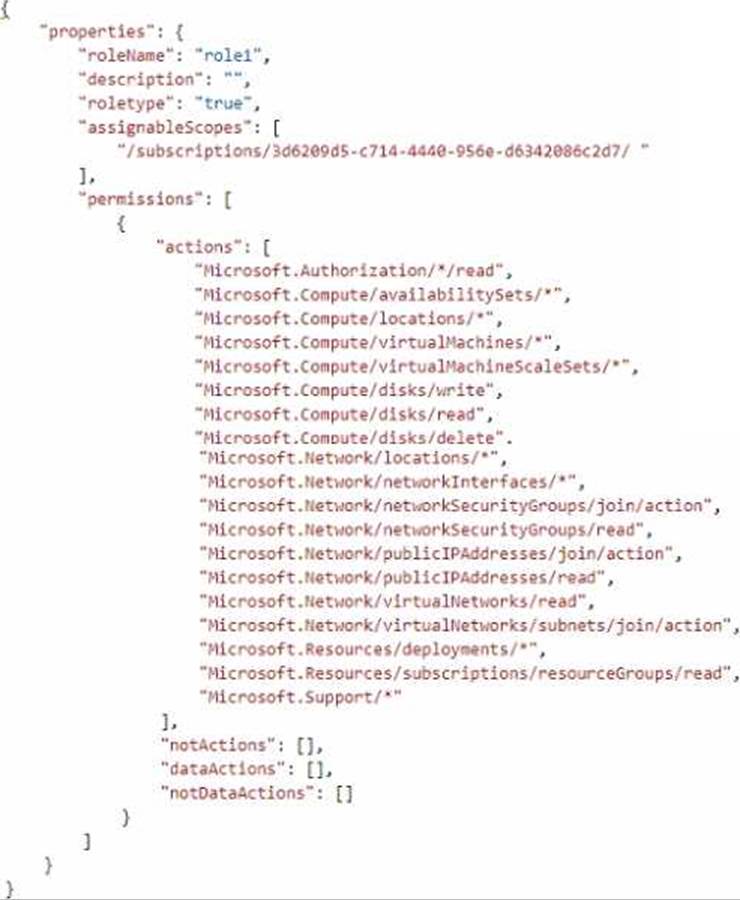
Use the drop-down menus to select the answer choice that completes each statement based on the information presented in the graphic. NOTE: Each correct selection is worth one point.

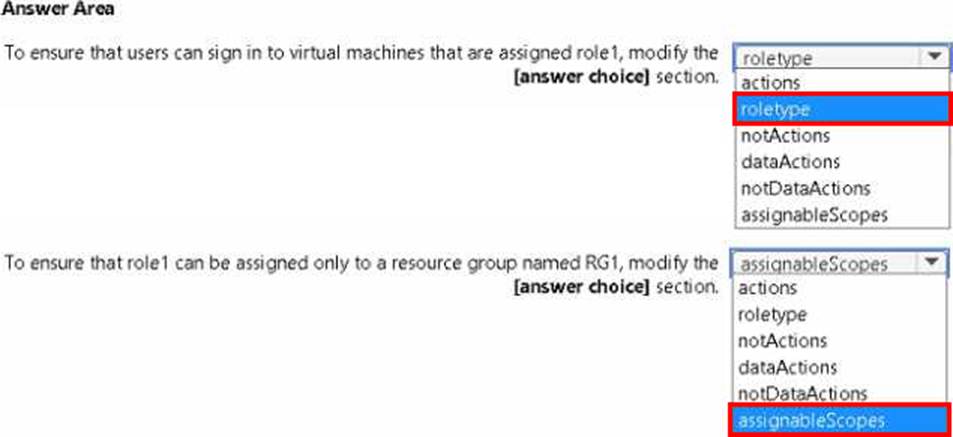
HOTSPOT
You have the App Service plan shown in the following exhibit.
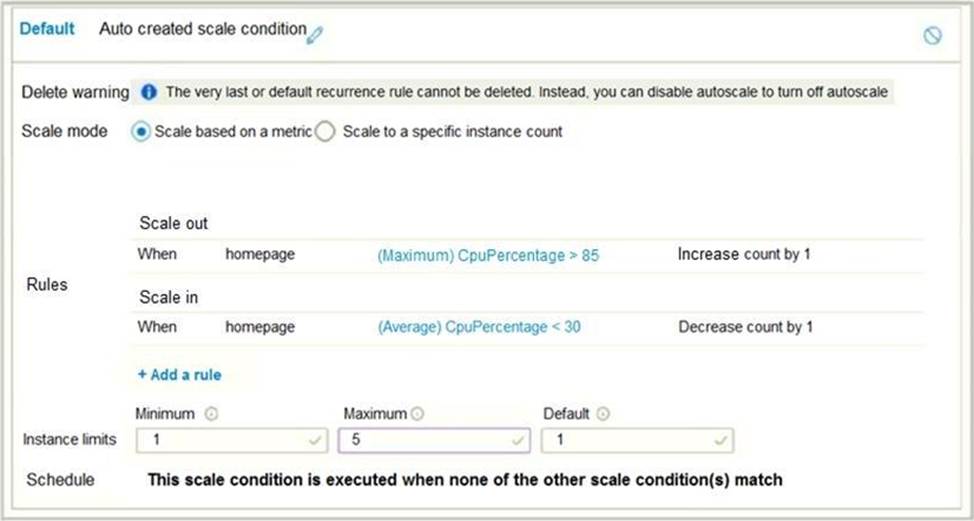
The scale-in settings for the App Service plan are configured as shown in the following exhibit.

The scale out rule is configured with the same duration and cool down tile as the scale in rule.
Use the drop-down menus to select the answer choice that completes each statement based on the information presented in the graphic.
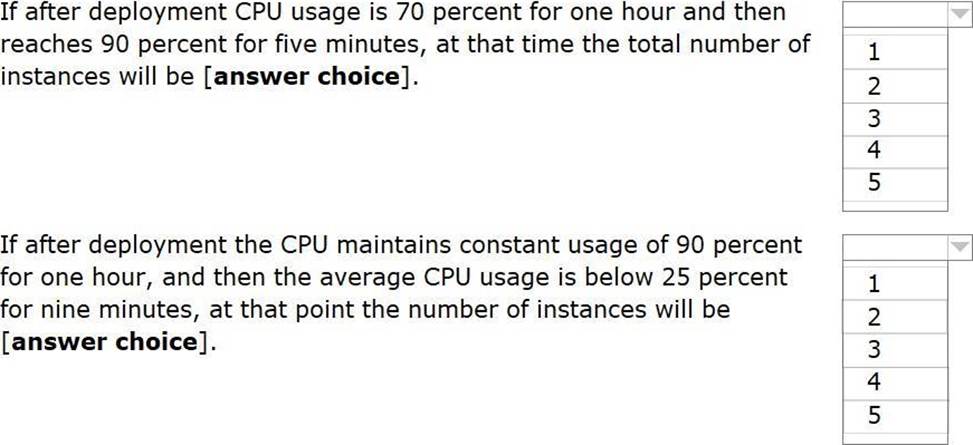

HOTSPOT
You have the App Service plan shown in the following exhibit.

The scale-in settings for the App Service plan are configured as shown in the following exhibit.

The scale out rule is configured with the same duration and cool down tile as the scale in rule.
Use the drop-down menus to select the answer choice that completes each statement based on the information presented in the graphic.


You have an Azure Storage account named storage1.
You need to enable a user named User1 to list and regenerate storage account keys for storage1.
Solution: You assign the Storage Account Contributor role to User1.
Does this meet the goal?
- A . Yes
- B . No
HOTSPOT
You have an Azure virtual network named VNet1 that connects to your on-premises network by using a site-to-site VPN. VMet1 contains one subnet named Subnet1.
Subnet1 is associated to a network security group (NSG) named NSG1. Subnet1 contains a basic internal load balancer named ILB1. ILB1 has three Azure virtual machines in the backend pool.
You need to collect data about the IP addresses that connects to ILB1. You must be able to run interactive queries from the Azure portal against the collected data.
What should you do? To answer, select the appropriate options in the answer area. NOTE: Each correct selection is worth one point.
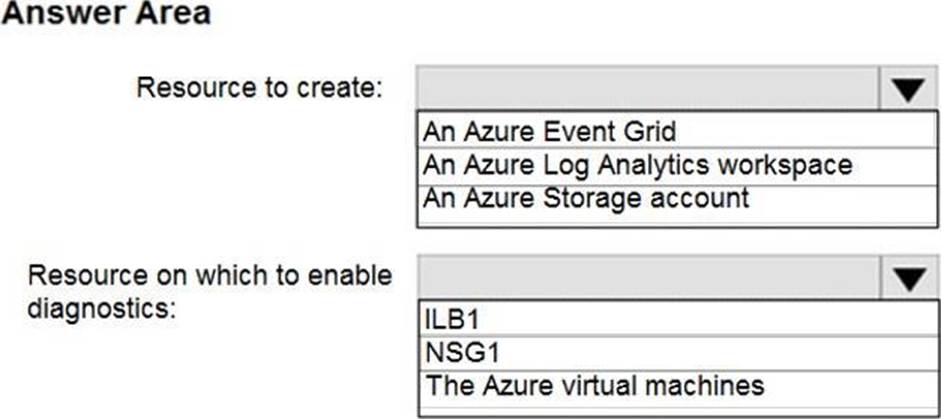
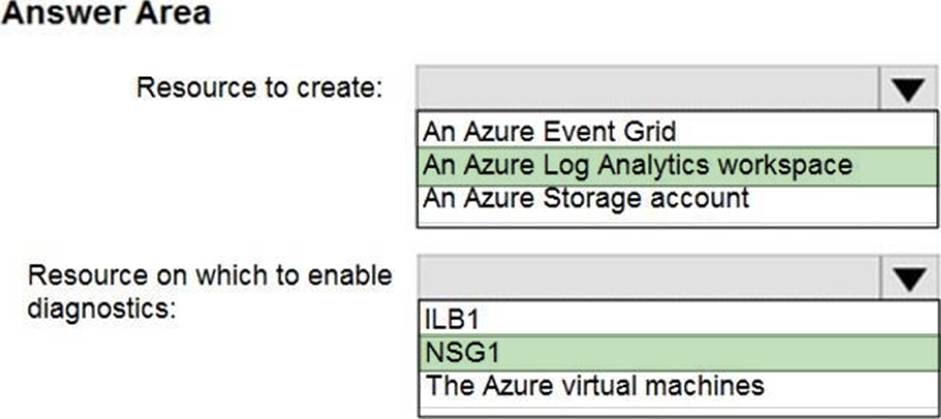
Explanation:
Box 1: An Azure Log Analytics workspace
In the Azure portal you can set up a Log Analytics workspace, which is a unique Log Analytics environment with its own data repository, data sources, and solutions.
Box 2: NSG1
NSG flow logs allow viewing information about ingress and egress IP traffic through a Network security group. Through this, the IP addresses that connect to the ILB can be monitored when the diagnostics are enabled on a Network Security Group.
We cannot enable diagnostics on an internal load balancer to check for the IP addresses.
As for Internal LB, it is basic one. Basic can only connect to storage account. Also, Basic LB has only activity logs, which doesn’t include the connectivity workflow. So, we need to use NSG to meet the
mentioned requirements.
You have the Azure virtual machines shown in the following table.
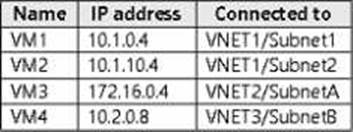
A DNS service is installed on VM1.
You configure the DNS server’s settings for each virtual network as shown in the following exhibit
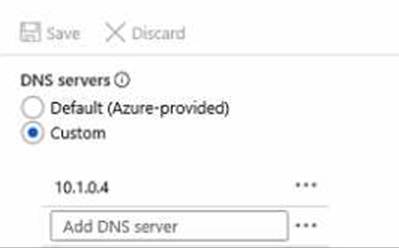
You need to ensure that all the virtual machines can resolve DNS names by using the DNS service on VM 1.
What should you do?
- A . Add service endpoints on VNET2 and VNET3.
- B . Add service endpoints on VNET1.
- C . Configure a conditional forwarder on VM1.
- D . Configure peering between VNET1, VNET2, and VNET3.
You have an Azure subscription that contains 10 virtual networks. The virtual networks are hosted in separate resource groups.
Another administrator plans to create several network security groups (NSGs) in the subscription.
You need to ensure that when an NSG is created, it automatically blocks TCP port 8080 between the virtual networks.
Solution: You configure a custom policy definition, and then you assign the Azure policy to the subscription.
Does this meet the goal?
- A . Yes
- B . No
HOTSPOT
You need to implement the planned changes for the new containers.
Which Azure services can you use for each image? To answer, select the appropriate options in the answer area. NOTE: Each correct selection is worth one point.
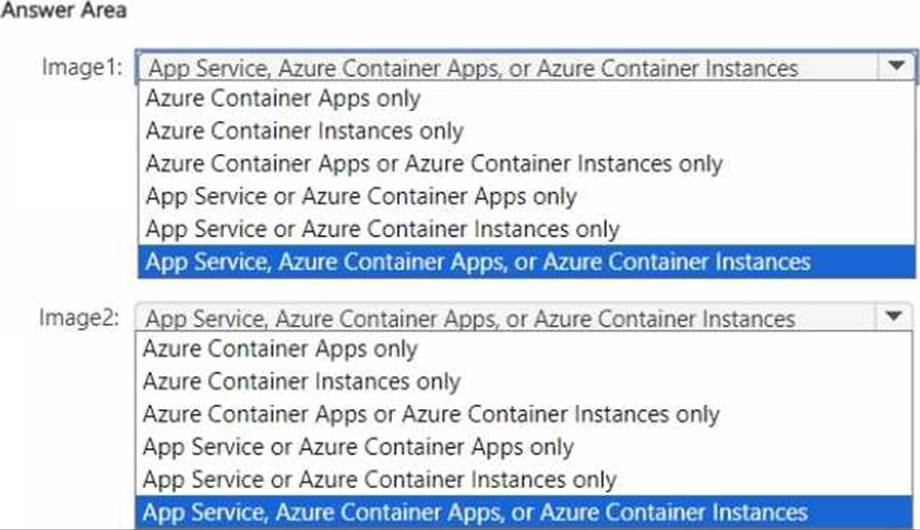
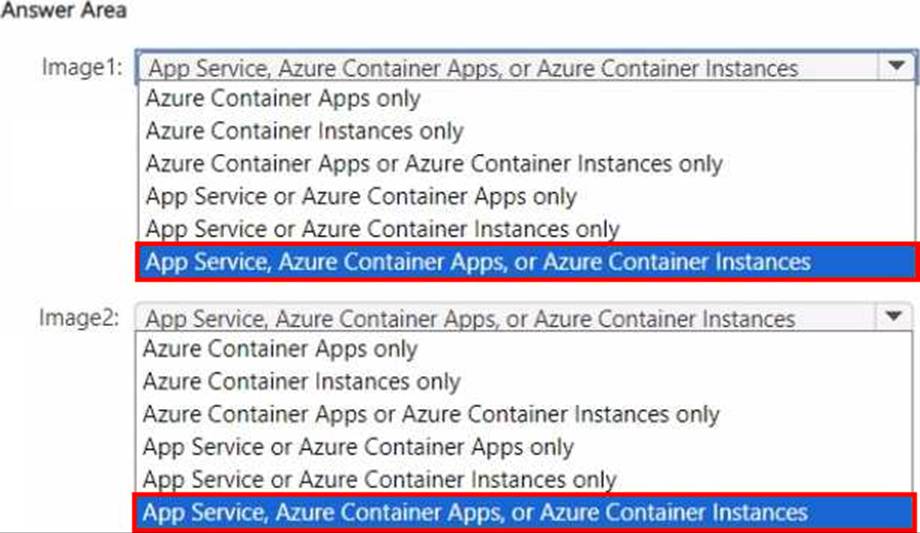
HOTSPOT
You need to configure a new Azure App Service app named WebApp1.
The solution must meet the following requirements:
• WebApp1 must be able to verify a custom domain name of app.contoso.com.
• WebApp1 must be able to automatically scale up to eight instances.
• Costs and administrative effort must be minimized.
Which pricing plan should you choose, and which type of record should you use to verify the domain? To answer, select the appropriate options in the answer area. NOTE: Each correct answer is worth one point.
